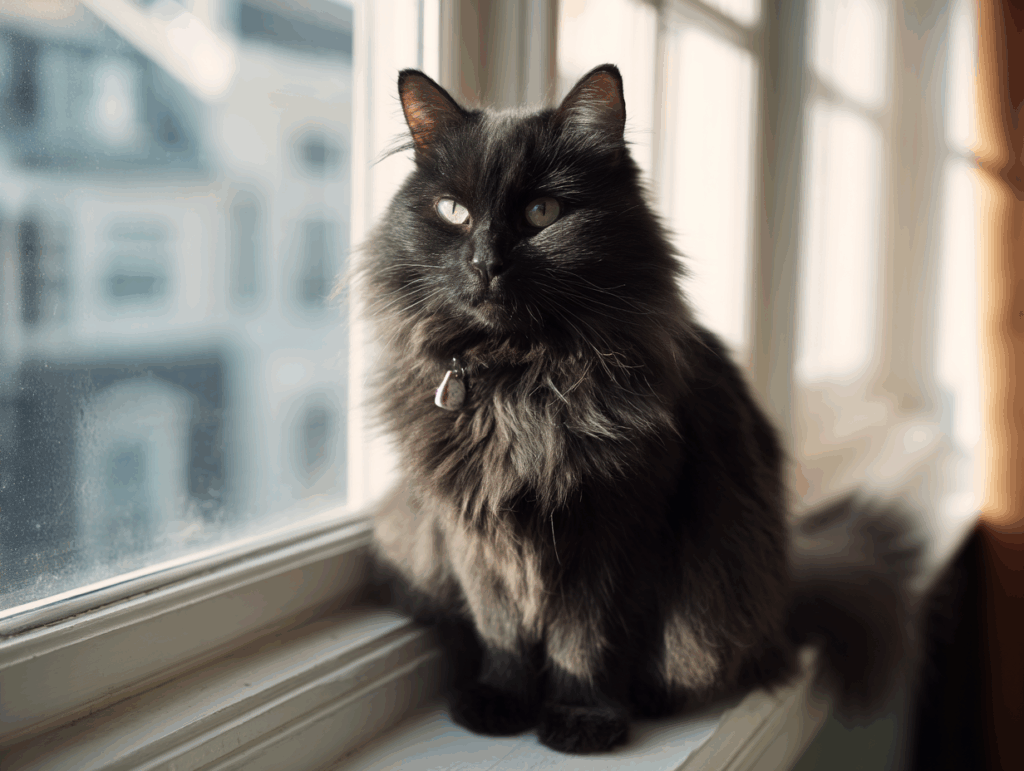
The Black Ragdoll Cat: Featuring Cherubim Ragdolls and More
Ragdoll cats are famous for their blue eyes, gentle personalities, and pointed colors — but can Ragdoll cats be black? Is the black Ragdoll cat color legitimate?
The answer surprises many: yes, black Ragdoll cats exist, though they aren’t considered traditional by the pointed breed standards.
Here, we will explain everything you want to know about black Ragdoll cats, Ragdoll color genetics, colorpoint vs. solid coats, and what to expect from black Ragdoll kittens, plus a detailed Ragdoll color chart for comparison.
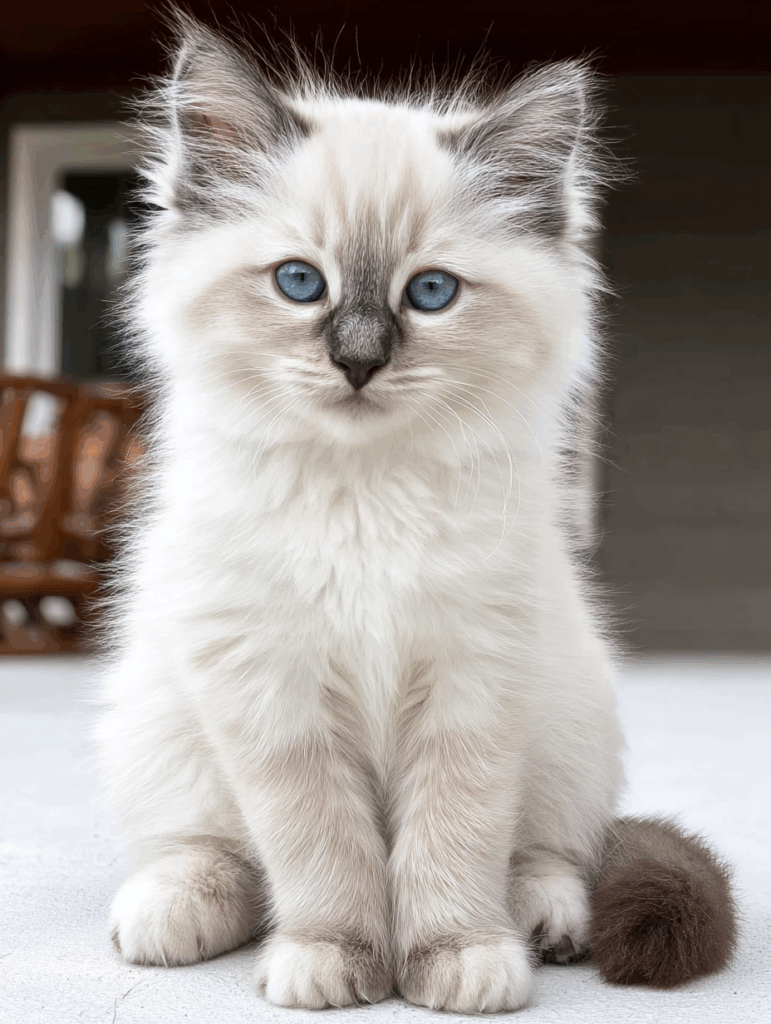
Searching for your own Ragdoll Kitten?
If you are here to find your very own Ragdoll baby, check out our Purebred Ragdoll Kittens for Sale.
At Almonte Cats, every kitten is:
- TICA / CFA registered from fully health-tested parents
- Raised in-home for confident, affectionate temperaments
- Vet-checked, vaccinated, and microchipped before going home
Reserve early — our litters are produced in limited numbers each year to preserve quality and true Ragdoll type.
View Available Kittens & Apply Here
Can Ragdoll Cats Be Black?
Yes. Ragdoll cats can be black, but they aren’t officially recognized as a show color under traditional pointed Ragdoll TICA or CFA standards. TICA recognizes non-pointed ragdolls under the Cherubim class. That means a black Ragdoll cat can be registered and shown under the Cherubim division, preserving its pedigree and authenticity within the breed.
Most Ragdolls carries the colorpoint gene, which restricts pigment to cooler areas of the body — the face, tail, ears, and legs. Black Ragdolls, however, lack this temperature-sensitive gene, resulting in a full, rich coat color that doesn’t fade at the body like typical Ragdoll patterns.
This makes black Ragdolls “non-traditional,” yet purebred if they descend from registered Ragdoll lines.
✅ Tip: Some breeders call them “solid Ragdolls” or “non-pointed Ragdolls.” They share the same affectionate temperament, large frame, and silky coat — only the color differs.
Understanding Ragdoll Cat Colors
Traditional Ragdolls come in six core colors:
- Seal
- Blue
- Chocolate
- Lilac
- Flame
- Cream
These appear in three main patterns:
- Colorpoint
- Mitted
- Bicolor
Each of these combinations results in dozens of recognized looks, from the Ragdoll white grey colorpoint to warm seal bicolor Ragdolls.
Black Ragdoll cats fall outside of these classifications but remain visually stunning and genetically Ragdoll. See the Ragdoll Cat breed standard here.
Black Cherubim Ragdoll vs. Traditional Ragdoll: Comparison Guide
| Feature | Black Cherubim Ragdoll | Traditional Pointed Ragdoll |
|---|---|---|
| Registry Classification (TICA) | Cherubim Ragdoll – recognized as non-pointed | Ragdoll (Traditional) – recognized as pointed only |
| Accepted Colors | Black, blue, chocolate, lilac, cinnamon, smoke, shaded, mink, sepia | Seal, blue, chocolate, lilac, flame, cream (pointed only) |
| Pattern | Solid or full-body color, no contrast between points and body | Colorpoint, mitted, or bicolor, light body with darker extremities |
| Eye Color | Gold, copper, green, or aqua (mink) | Always vivid blue |
| Coat Texture | Semi-long, silky, same plush texture as traditional Ragdolls | Semi-long, soft, draping coat |
| Temperament | Calm, affectionate, gentle — identical to pointed Ragdolls | Calm, affectionate, gentle — classic Ragdoll personality |
| Genetic Makeup | Lacks the color-restricting gene (full pigment expression) | Carries temperature-sensitive colorpoint gene |
| Show Eligibility (TICA) | Shown as Cherubim Ragdolls or in “New Traits / Household Pet” classes | Shown in Traditional Ragdoll divisions only |
| Registration | Fully registerable with TICA as Cherubim (non-pointed) | Fully registerable with TICA, CFA, ACFA (pointed) |
| Rarity | Rare – produced in limited numbers; valued for uniqueness | Common within breed standards |
| Breed Authenticity | 100% Ragdoll lineage; same pedigree and conformation | 100% Ragdoll lineage; conforms to traditional show type |
| Best For | Families who love Ragdoll temperament but prefer darker or unique colors | Families seeking classic blue-eyed, pointed Ragdoll look |
Summary
Both types share the same loving, people-oriented temperament that defines the Ragdoll breed. The only difference is how their color genes express.
The Black Cherubim Ragdoll brings full-body pigment and new visual depth to the breed, while maintaining the hallmark traits that make Ragdolls beloved companions worldwide.
The Difference Between Colorpoint and Solid Ragdolls
What Is a Ragdoll Colorpoint?
A colorpoint Ragdoll has lighter body fur with darker extremities (face, paws, tail, and ears). This signature pattern comes from the cs gene, which limits pigment production based on temperature.
That’s why kittens are born white — color develops as they grow and body temperature changes.
What Is a Solid Ragdoll?
A solid Ragdoll has full-color pigmentation across the body — no pale torso or light shading.
Black Ragdolls belong to this group, along with solid blue, chocolate, lilac, and even red variants.
Solid Ragdolls are purebred, but not “show type” in the classic sense. Many pet families love them for their unique, mysterious look.
Black Ragdoll Cat Colors Explained
Black Ragdolls come in several variations depending on coat pattern, dilution, and genetics:
| Variation | Description |
|---|---|
| Solid Black Ragdoll Cat | Jet black from nose to tail, with a rich, glossy coat. Eye color varies from gold to copper. |
| Black Smoke Ragdoll Cat | Appears black at first glance, but the undercoat is pale silver or white, giving a “smoky” shimmer. |
| Black Mink Ragdoll Cat | Carries the mink gene, producing a deep, velvety black with aqua or teal eyes. |
| Black Sepia Ragdoll Cat | The darkest version of all, with a rich espresso tone and greenish-gold eyes. |
| Black Bicolor Ragdoll Mix | Black patches over white, often resembling tuxedo patterns. Common in black Ragdoll mixes. |
🌙 Each variation maintains the Ragdoll’s trademark calm personality and plush coat, even though the color deviates from the traditional point pattern.
Cherubim Ragdolls and TICA Recognition
The term Cherubim Ragdoll refers to Ragdolls that are non-pointed — meaning they do not have the traditional color-restricted pattern or blue eyes.
While the original Ragdoll standard describes only the pointed variety (seal, blue, chocolate, lilac, flame, cream, etc.), TICA recognizes that cats from the same lines can produce other colors and patterns. To include them within the same genetic family, TICA allows them to be registered under the Cherubim Ragdoll classification.
This category includes solid, mink, and sepia Ragdolls, which can come in many shades — including black, chocolate, cinnamon, smoke, and shaded. These cats are genetically Ragdolls with the same structure, coat texture, and temperament, but without the pointed pattern.
In short, TICA recognizes non-pointed Ragdolls as Cherubims. That means a black Ragdoll cat can be registered and shown under the Cherubim division, preserving its pedigree and authenticity within the breed.
The Cherubim distinction gives breeders the ability to:
- Maintain genetic diversity within Ragdoll lines.
- Register and track non-traditional colors.
- Acknowledge that black, mink, and sepia Ragdolls are part of the same heritage as the traditional blue-eyed variety.
A black Ragdoll is not necessarily a different breed — it’s simply a Cherubim Ragdoll, a non-pointed expression of the same gentle, people-focused cat.
Black Ragdoll Cat Blue Eyes — Myth or Reality?
Traditional Ragdolls have vivid blue eyes due to the colorpoint gene.
Black Ragdolls don’t carry that gene, so they generally do not have blue eyes — instead, you’ll see:
- Gold
- Copper
- Green
- Occasionally aqua or blue-green (in mink or sepia variants)
If you see a black Ragdoll cat with blue eyes, it’s likely a Ragdoll mix or a mink Ragdoll with deeper color expression.
Ragdoll Color Chart (Including Black Variants)
| Color Type | Pattern | Eye Color | Notes |
|---|---|---|---|
| Seal Point | Colorpoint / Mitted / Bicolor | Blue | Classic dark brown points |
| Blue Point | Colorpoint / Mitted / Bicolor | Blue | Dilute of seal |
| Chocolate Point | Colorpoint / Mitted / Bicolor | Blue | Warm cocoa tone |
| Lilac Point | Colorpoint / Mitted / Bicolor | Blue | Pale lavender tone |
| Flame Point | Colorpoint | Blue | Red-gold points |
| Cream Point | Colorpoint | Blue | Dilute flame |
| Black (Solid) | Solid | Gold, Copper, Green | Not traditional; no point contrast |
| Black Smoke | Solid / Mink | Gold to Green | Pale undercoat, dramatic sheen |
| Black Mink | Mink | Aqua / Teal | Soft coat, richer color |
| Black Sepia | Sepia | Green / Gold | Deepest, darkest variation |
📘 For a visual reference, see our full Ragdoll Cat Color Chart with photos of every color and pattern.
Black Ragdoll Kittens: What to Expect
Black Ragdoll kittens are born dark and keep their color throughout life, unlike pointed Ragdolls that lighten on the body.
Personality
Just like any Ragdoll, black kittens are gentle, floppy, and thrive on human contact. They love attention, follow you from room to room, and get along with other pets.
Size
Expect males to reach 15–20 pounds and females around 10–15 pounds, with full size at 3–4 years old.
Coat Care
Their coat is dense, silky, and lower maintenance than many long-haired breeds.
Brush two to three times weekly to prevent tangles and distribute oils.
💡 Tip: Use a stainless comb and grooming spray to maintain their glossy black shine.
The Genetics Behind Black Ragdolls
The black coat results from the dominant B gene and absence of the colorpoint gene (cs).
In simple terms:
- Traditional Ragdolls: cs/cs (temperature-sensitive pigment)
- Black Ragdolls: C/C (full pigment expression)
This difference makes them solid-colored but genetically related to standard Ragdolls.
Some breeders selectively include solid and mink Ragdolls to preserve genetic diversity while keeping the Ragdoll’s personality intact.
Black Ragdoll Mix Cats
If you’ve seen a black Ragdoll mix online — perhaps with blue eyes or tuxedo markings — chances are it’s a cross between a Ragdoll and another long-haired breed like a Persian, Maine Coon, or domestic longhair.
While mixed cats can resemble Ragdolls in size and coat, they usually differ in:
- Eye color (green, gold, or amber)
- Bone structure (narrower face)
- Temperament (less predictable)
- Coat feel (may lack the signature silky drape)
Always verify pedigree papers or DNA testing if you’re unsure whether your cat is a true Ragdoll or a mix.
Why Black Ragdolls Are Rare
Black Ragdolls are uncommon because most breeders focus on show-standard pointed colors. Producing solids means breeding away from the colorpoint gene — a disqualifier in the show ring.
However, among pet owners, solid Ragdolls are gaining popularity for their striking looks and classic temperament.
At Almonte Cats, we occasionally produce black mink and solid Ragdoll kittens from health-tested lines for families seeking something truly unique.
✨ Reserve early: these kittens are often in high demand and produced in limited numbers each year. Learn more about Black Ragdoll Cat Prices here.
The Beauty of the Black Ragdoll Cat
Despite their non-traditional status, black Ragdolls capture the same magic — calm, affectionate, and beautiful in motion.
Their silky black coats shimmer in the light, and their relaxed personality makes them ideal companions for families or quiet homes alike.
They prove that the Ragdoll’s appeal isn’t just in color — it’s in character.
How to Identify a True Black Ragdoll Cat or Kitten
Look for:
- Pedigree papers from TICA or CFA
- Registered breeder name (avoid generic listings)
- Consistent Ragdoll features: large bone structure, medium-long fur, soft temperament
- Early photos showing solid black color at birth (not white with darkening points)
Avoid scammers claiming “rare black Ragdolls with blue eyes” at suspiciously low prices. Always verify with established breeders.
Choosing a Black Ragdoll Kitten
When adopting, focus on health and temperament above all:
- Ask for DNA color testing to confirm solid status
- Request health certificates for HCM and PKD
- Ensure kittens are raised in-home with socialization and litter training
- Review a written health guarantee
At Almonte Cats, every kitten is registered, microchipped, vaccinated, and raised underfoot. Whether traditional or solid, each Ragdoll receives the same level of care, trust, and lifelong support. See Ragdoll Breeder near me for more information.
Summary: Can Ragdoll Cats Be Black?
Yes — Ragdolls can be black, but they are solid-colored, not pointed.
They remain genuine Ragdolls in body, temperament, and lineage, even if they fall outside traditional show categories.
Black Ragdoll cats are perfect for families who value uniqueness, low maintenance, and a luxurious look that’s still unmistakably Ragdoll at heart.
Frequently Asked Questions About Black Ragdoll Cats
Can Ragdoll cats be black?
Yes. Ragdoll cats can be black, though they are not considered traditional pointed Ragdolls. Instead, they are registered within TICA as Cherubim Ragdolls, which includes non-pointed varieties such as solid, mink, and sepia. See more about Ragdoll coat colors here.
What is a Cherubim Ragdoll?
Cherubim Ragdoll is the term TICA uses for non-pointed Ragdolls. These cats are from the same lineage and share the same temperament, coat texture, and body type as pointed Ragdolls, but they come in a wider range of colors — including black, chocolate, cinnamon, and smoke.
Are black Ragdolls purebred?
Yes. As long as the cat comes from registered Ragdoll parents, a black Ragdoll is purebred. The difference is only in color expression, not genetics. The black coat simply shows full pigment instead of being limited to the points like traditional colors.
Are black Ragdolls recognized by TICA?
Yes. While the traditional show standard covers pointed colors only, TICA registers black and other non-pointed Ragdolls under the Cherubim category. This means a black Ragdoll can be fully registered and shown in the appropriate division.
Do black Ragdolls have blue eyes?
Usually not. The famous blue eyes of pointed Ragdolls come from the temperature-sensitive colorpoint gene. Black Ragdolls lack this gene, so their eye color ranges from gold and copper to green or aqua (in mink varieties).
What is the difference between a traditional Ragdoll and a black Ragdoll?
Traditional Ragdolls have light bodies with darker extremities and always blue eyes.
Black Ragdolls are full-color cats — the pigment covers the entire body, and the eyes can be any shade from green to gold. Temperament, coat texture, and body size remain identical.
Are black Ragdolls rare?
Yes. Most breeders focus on show-standard pointed colors, so solid black or Cherubim Ragdolls are produced in smaller numbers. Their rarity and elegant appearance make them highly sought after among pet owners.
Can a black Ragdoll be shown?
Yes, but under different rules. Traditional pointed Ragdolls compete in the standard Ragdoll class, while black and other non-pointed Ragdolls are exhibited as Cherubim Ragdolls or in TICA’s New Traits or Household Pet divisions.
What colors do Cherubim Ragdolls come in?
Cherubim Ragdolls include black, blue, chocolate, lilac, red, cream, smoke, and shaded coats in solid, mink, or sepia expressions. This classification allows breeders to preserve color diversity within the same Ragdoll bloodlines.
Are black Ragdolls different in personality?
No. Whether pointed or solid, all Ragdolls share the same affectionate, relaxed temperament. The color of the coat doesn’t influence behavior — only genetics and early socialization do.
How can I tell if a black Ragdoll is authentic?
Ask for registration papers or pedigree from TICA or another recognized registry. Reputable breeders will provide documentation showing that the kitten is a registered Cherubim Ragdoll and part of verified Ragdoll lineage. See Black Ragdoll Cat Prices here.
Do black Ragdolls have long coats like other Ragdolls?
Yes. Black Ragdolls have the same semi-long, silky coat as traditional Ragdolls. The texture may appear even softer because of how the solid black fur reflects light.
Why do some breeders not list black Ragdolls on their websites?
Some breeders focus exclusively on show-eligible pointed Ragdolls. Others, like programs that include Cherubim Ragdolls, intentionally preserve these lines for diversity and pet families who prefer darker coats. See the best Ragdoll breeders in the USA here.
What makes black Cherubim Ragdolls special?
They combine the signature Ragdoll temperament — calm, social, affectionate — with the striking beauty of a jet-black, full-color coat. As recognized Cherubim Ragdolls in TICA, they represent the natural evolution of the breed’s color diversity while maintaining true Ragdoll character.
Related Articles
- Chocolate Point Ragdoll Cats
- Can Ragdolls be Tabby?
- Are Ragdolls Hypoallergenic?
- Flame Point Ragdoll Cats: Guide to the Red-Point Beauty
Sources & References
- The International Cat Association (TICA) – Official Ragdoll & Cherubim Ragdoll Breed Standards
🔗 https://tica.org/breeds/browse-all-breeds?view=article&id=859 - Cat Fanciers’ Association (CFA) – Traditional Ragdoll Breed Profile
🔗 https://cfa.org/ragdoll/ - Ragdoll Fanciers Club International (RFCI) – Breed History and Color Standards
🔗 https://rfci.org/ - TICA Colors & Genetics Resource Library – Understanding Mink, Sepia, and Solid Color Inheritance
🔗 https://tica.org/breeds/genetics - Messybeast Cat Genetics Database – Colorpoint and Full-Color Gene Expression in Cats
🔗 https://www.messybeast.com/genetics.htm - LoveToKnow Cats – Ragdoll Cat Colors Explained
🔗 https://cats.lovetoknow.com/ragdoll-cat-colors - Almonte Cats (Official Site) – Cherubim and Traditional Ragdoll Lines, Color Variations, and Kitten Standards
🔗 https://almontecats.com
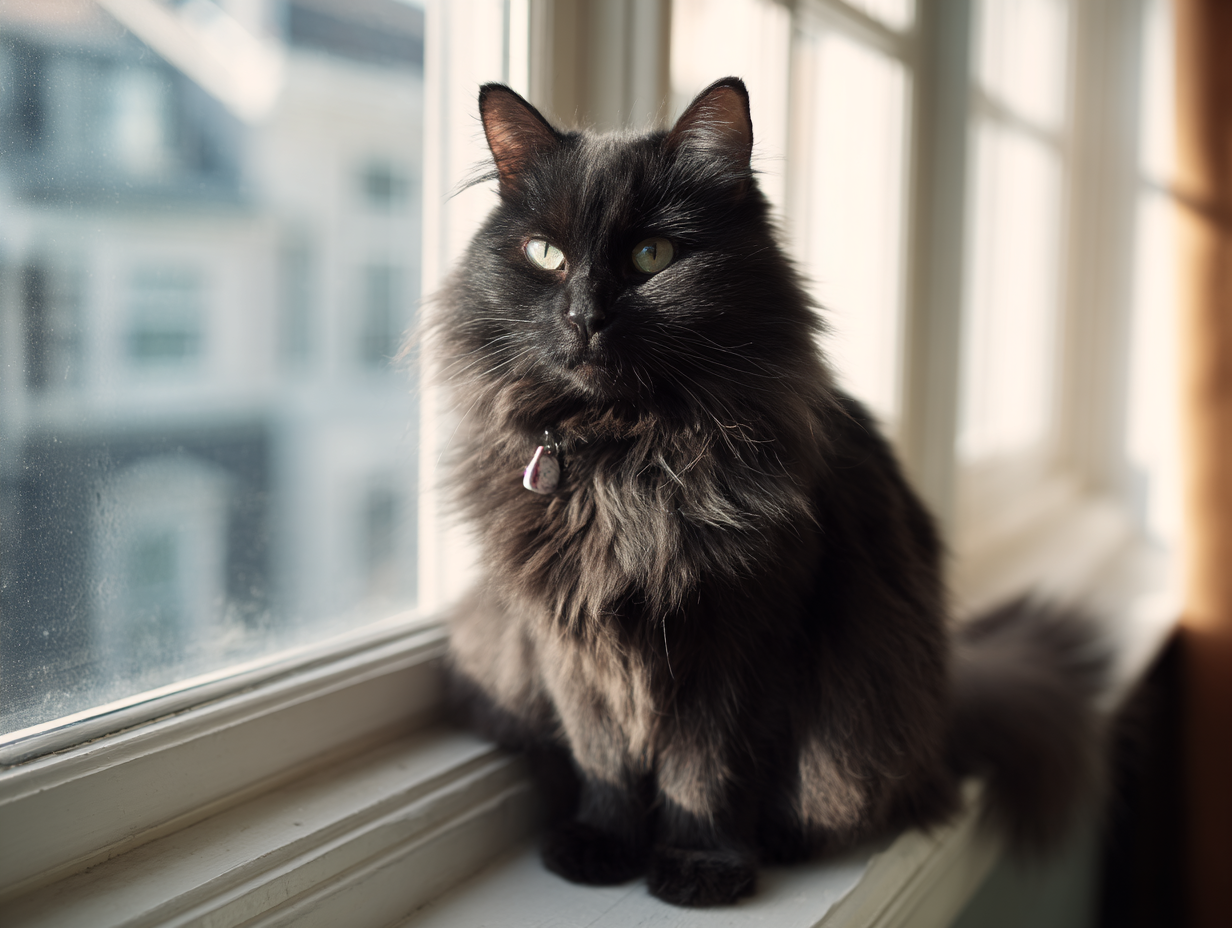
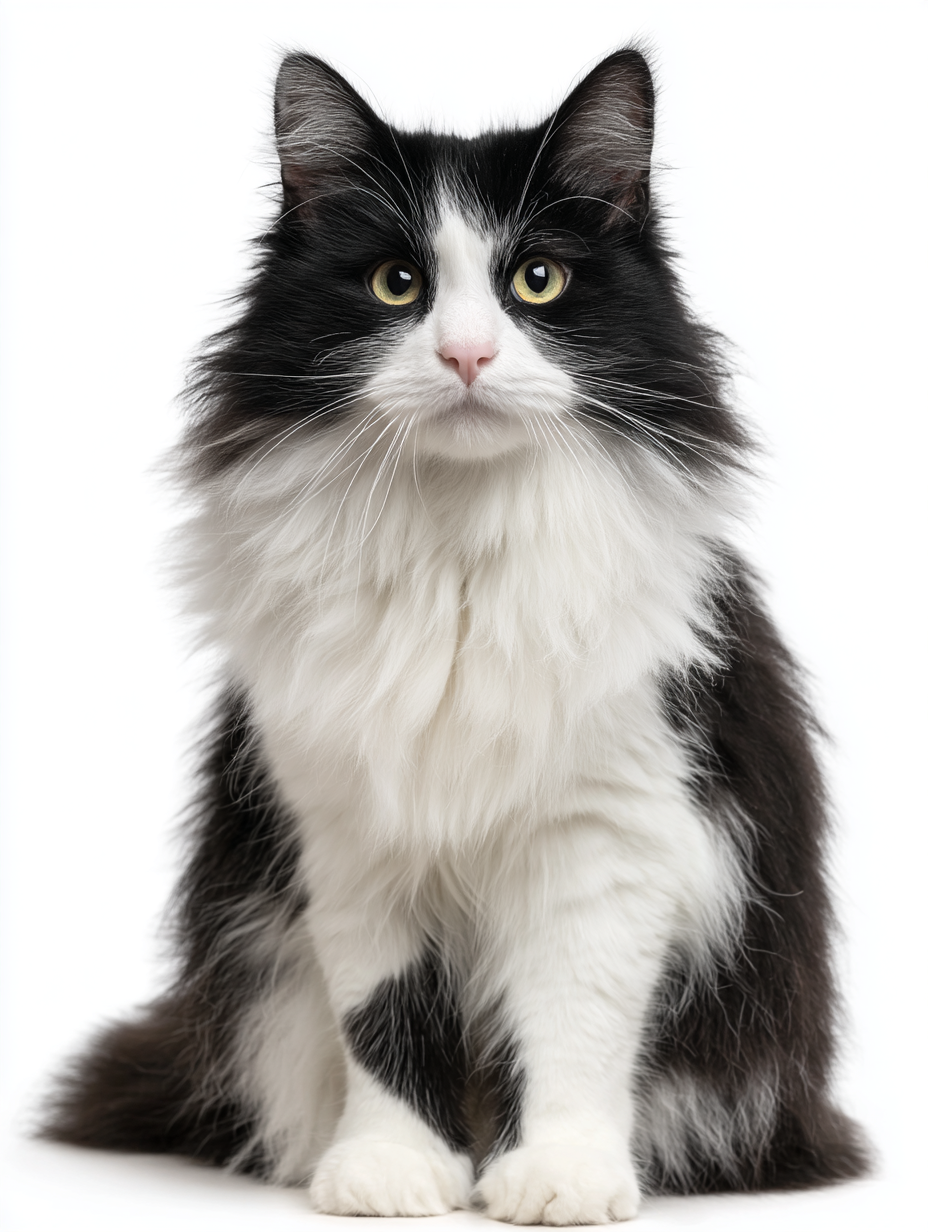
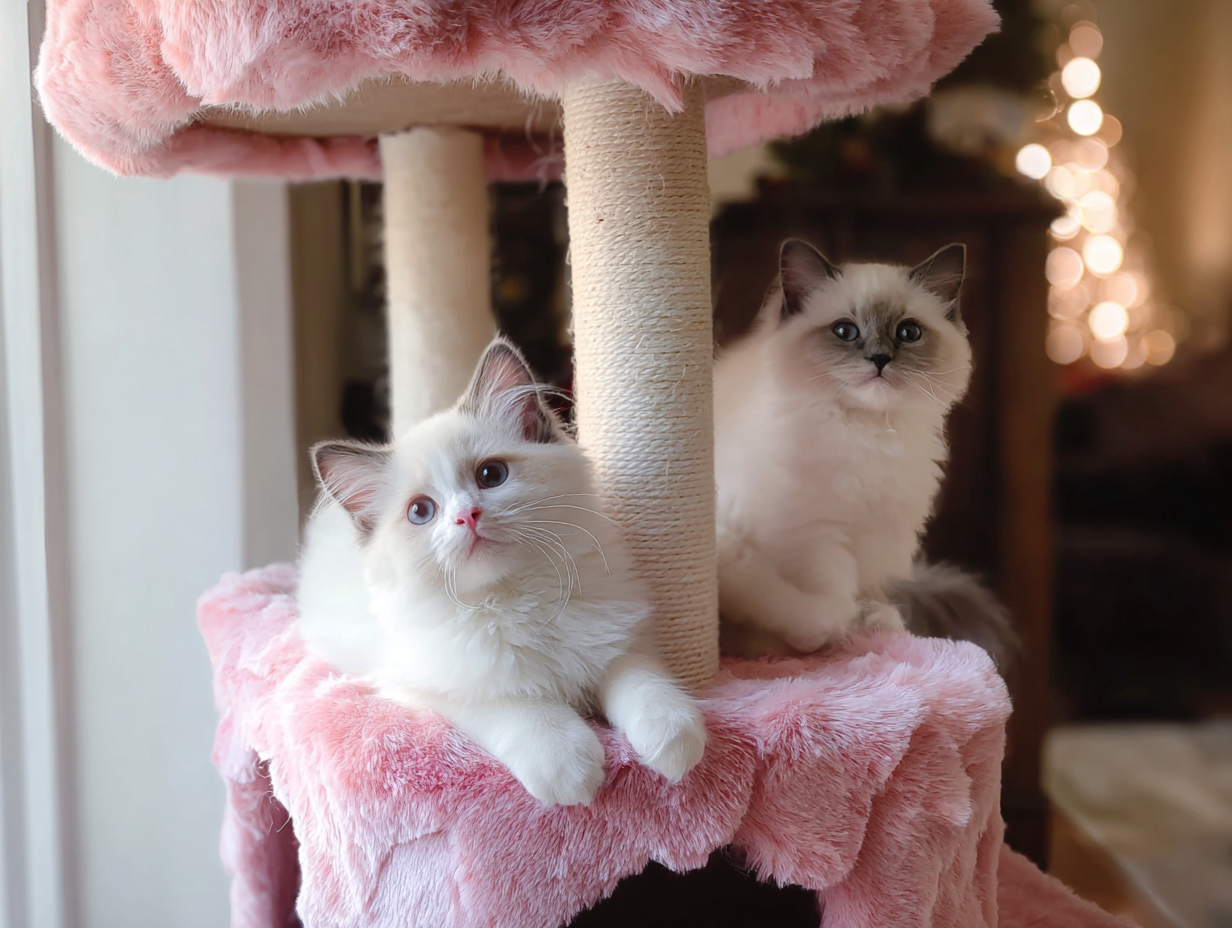
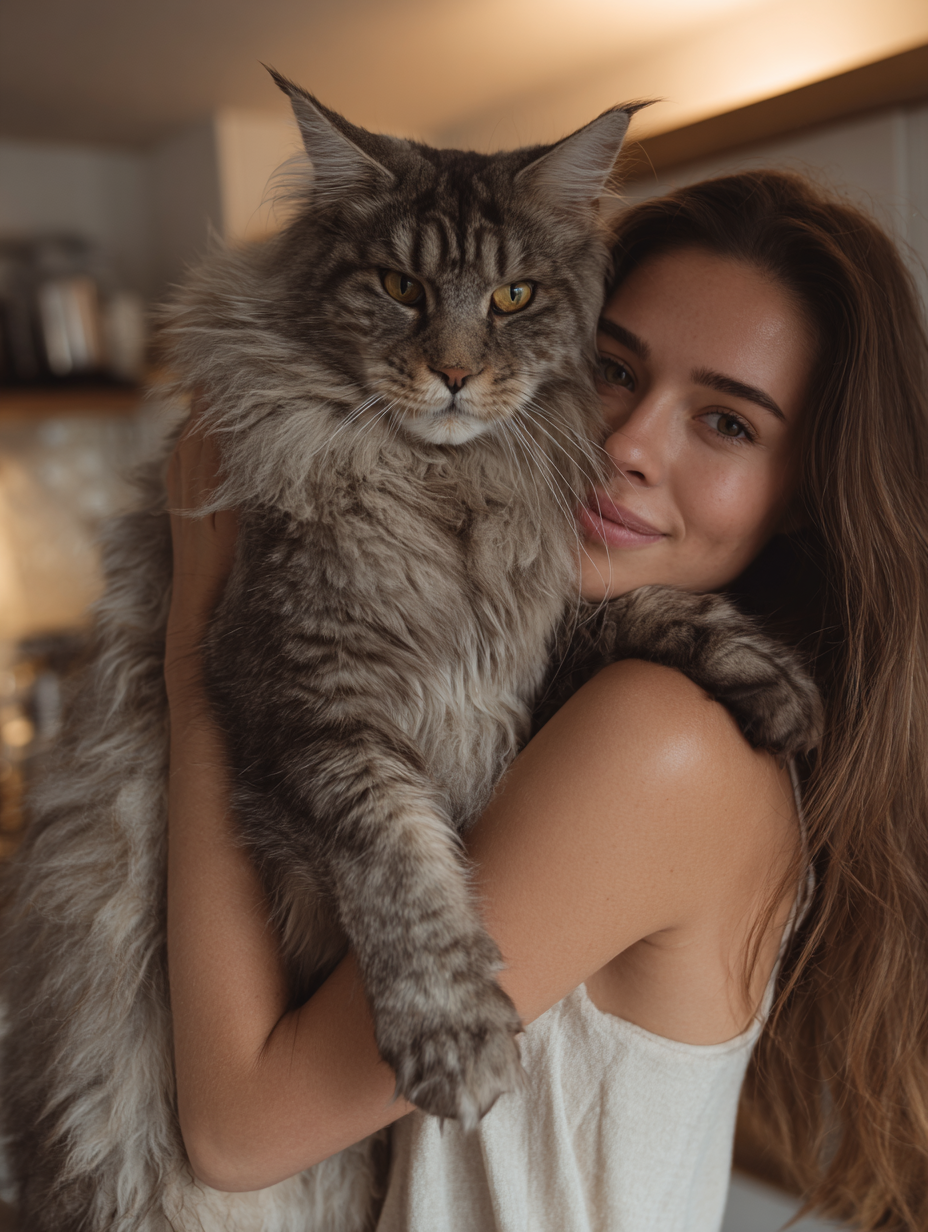

Read the Comments +